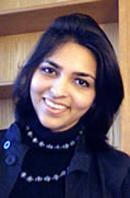by Ashka Naik, Program Manager, Advancing Green Building in Higher Education, Second Nature
 Earlier this month, I traveled to Nashville, TN, where I attended the Thurgood Marshall College Fund’s (TMCF)Member University Professional Institute, “2010 HBCUs* and Beyond.” Felicia Davis, Director of UNCF‘s Facilities and Infrastructure Enhancement program invited me to join her at this event.
Earlier this month, I traveled to Nashville, TN, where I attended the Thurgood Marshall College Fund’s (TMCF)Member University Professional Institute, “2010 HBCUs* and Beyond.” Felicia Davis, Director of UNCF‘s Facilities and Infrastructure Enhancement program invited me to join her at this event.
We had a two-fold mission in attending this meeting, one part of which was to make new connections. Public HBCUs (around 50 member schools of TMCF) often remain severely under-represented in Second Nature’s programs; only 9 of these 50 institutions are ACUPCC signatories. Therefore, we wanted to seize the opportunity to engage this group of higher education institutions and share details about our activities. With the help of two enthusiastic attendees, I made the acquaintance of several interesting individuals. Renford Brevett, Director of Title III Programs at Lincoln University, introduced me to more than 20 leaders including presidents, provosts, deans, CFOs, and faculty members. Felicia Davis and I also presented at one of the panels, “Building Green at HBCUs,” during which we discussed the challenges HBCUs face while building green and how Second Nature’s capacity-building programs could help them overcome these barriers.
The other part of our two-fold mission was to spread the word about UNCF’sBuilding Green Learning Institutes.
Second Nature is collaborating with UNCF on these institutes as an advisor and thought partner. As a result of my and Felicia’s attendance at the Nashville event, we now have at least 15 additional schools interested in participating in these Learning Institutes, bringing the total number close to 40. In following up with my new contacts at these schools, I have also invited them to apply for theKresge Fellowship Program.
So, all in all these were a pleasant and very constructive few days. This experience and interaction with the representatives from public HBCUs also underscored how these institutions, with their rich histories and verve for learning, are poised to become tomorrow’s leaders. Many of these institutions are very well placed to take the leap and transform themselves into sustainable communities. With the resources and opportunities offered by the Advancing Green Building in Higher Education program and the framework of the American College and University Presidents’ Climate Commitment, we aim to engage these institutions and assist them in their pursuit of climate neutrality, social sustainability and economic profitability.
…Oh, and I forgot to mention that we were put in the world’s largest hotel (that is under one roof with around 10 acres of built-up), quite ironic for someone who was there to talk about green buildings, efficiencies, and less is more…
* Historically Black Colleges and Universities

Add new comment